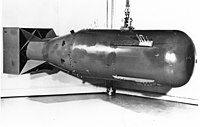
Comparing the Incidence of Thyroid Dysfunction in Pediatric Subjects after HSCT with Reduced Intensity Vs. Myeloablative Conditioning
Sign Up to like & getrecommendations! Published in 2020 at "Biology of Blood and Marrow Transplantation"
DOI: 10.1016/j.bbmt.2019.12.187
Abstract: Introduction Subjects who undergo hematopoietic stem cell transplant (HSCT) are at increased risk for thyroid dysfunction. Few studies compare myeloablative (MAC) and reduced intensity (RIC) conditioning regimens. Objectives Describe the prevalence, incidence, and risk factors… read more here.
Keywords: thyroid dysfunction; risk; hsct; reduced intensity ... See more keywords

Outcomes of Acute Myelogenous Leukemia Patients Undergoing Haploidentical Hematopoietic Cell Transplantation with Post-Transplant Cyclophosphamide: Impact of Total Body Irradiation Versus Chemotherapy-Based Myeloablative Conditioning
Sign Up to like & getrecommendations! Published in 2020 at "Biology of Blood and Marrow Transplantation"
DOI: 10.1016/j.bbmt.2019.12.618
Abstract: Background Optimal myeloablative conditioning (MAC) in the setting of haploidentical hematopoietic cell transplantation (haplo-HCT) with post-transplant cyclophosphamide (PTCy) is unknown. We studied the outcomes of total body irradiation (TBI) vs. chemotherapy (CT) based MAC regimens… read more here.
Keywords: haplo hct; haploidentical hematopoietic; cell transplantation; hematopoietic cell ... See more keywords

Comparative effectiveness of busulfan/cyclophosphamide versus busulfan/fludarabine myeloablative conditioning for allogeneic hematopoietic cell transplantation in acute myeloid leukemia and myelodysplastic syndrome.
Sign Up to like & getrecommendations! Published in 2019 at "Hematology/oncology and stem cell therapy"
DOI: 10.1016/j.hemonc.2019.09.002
Abstract: OBJECTIVE/BACKGROUND Busulfan/cyclophosphamide (Bu/Cy) and busulfan/fludarabine (Bu/Flu) are both standard myeloablative conditioning (MAC) regimens for allogeneic hematopoietic cell transplantation (alloHCT). We compared the effectiveness of these regimens with a focus on quality of life (QOL). METHODS… read more here.
Keywords: busulfan; cell; busulfan fludarabine; allogeneic hematopoietic ... See more keywords

Successful Haploidentical Stem Cell Transplant With Posttransplant Cyclophosphamide in Wiskott-Aldrich Syndrome With Myeloablative Conditioning.
Sign Up to like & getrecommendations! Published in 2020 at "Journal of Pediatric Hematology/Oncology"
DOI: 10.1097/mph.0000000000001841
Abstract: Hematopoietic stem cell transplant (HSCT) is the only curative treatment modality for Wiskott-Aldrich syndrome. Haploidentical HSCT with posttransplant cyclophosphamide (PTCy) is an upcoming option in children with nonmalignant conditions. However, only few cases have been… read more here.
Keywords: aldrich syndrome; myeloablative conditioning; hsct; wiskott aldrich ... See more keywords

Myeloablative Conditioning Regimen in Haploidentical Stem Cell Transplantation With Posttransplant Cyclophosphamide in Children With High-risk Hematologic Malignancies
Sign Up to like & getrecommendations! Published in 2022 at "Journal of Pediatric Hematology/Oncology"
DOI: 10.1097/mph.0000000000002406
Abstract: Limited information is available on outcomes of haploidentical stem cell transplantation (haploSCT) with posttransplant cyclophosphamide using myeloablative conditioning regimens in children and adolescents. We report the results of a single-institution retrospective study of myeloablative haploSCT… read more here.
Keywords: hematologic malignancies; high risk; risk hematologic; myeloablative conditioning ... See more keywords

Autologous Recovery With Chromosomal Abnormalities After Unrelated Umbilical Cord Blood Transplantation With Myeloablative Conditioning in a Case of Pediatric Acute Lymphoblastic Leukemia.
Sign Up to like & getrecommendations! Published in 2022 at "Journal of pediatric hematology/oncology"
DOI: 10.1097/mph.0000000000002571
Abstract: Detailed case reports of autologous recovery of hematopoiesis after hematopoietic stem cell transplantation with myeloablative conditioning are scarce. We present a rare case of a 3-year-old male with relapsed KMT2A-rearranged acute lymphoblastic leukemia who experienced… read more here.
Keywords: autologous recovery; myeloablative conditioning; transplantation; lymphoblastic leukemia ... See more keywords

Hematopoietic cell transplant outcomes after myeloablative conditioning with fludarabine, busulfan, low‐dose total body irradiation, and rabbit antithymocyte globulin
Sign Up to like & getrecommendations! Published in 2020 at "Clinical Transplantation"
DOI: 10.1111/ctr.14018
Abstract: Optimal conditioning and graft‐vs‐host disease (GVHD) prophylaxis for hematopoietic cell transplantation (HCT) are unknown. Here, we report on outcomes after low toxicity, myeloablative conditioning consisting of fludarabine, busulfan, and 4 Gy total body irradiation, in… read more here.
Keywords: total body; conditioning; body irradiation; hematopoietic cell ... See more keywords

Reduced plasma ascorbic acid levels in recipients of myeloablative conditioning and hematopoietic cell transplantation
Sign Up to like & getrecommendations! Published in 2019 at "European Journal of Haematology"
DOI: 10.1111/ejh.13287
Abstract: Hematopoietic cell transplantation (HCT) conditioned using myeloablative conditioning (MAC) is complicated by end organ injury due to endothelial dysfunction and graft versus host disease. Mucositis and oxidant injury results in micronutrient deficiency. Ascorbic acid (AA)… read more here.
Keywords: acid levels; cell transplantation; ascorbic acid; hematopoietic cell ... See more keywords

Sequence matters: Total body irradiation (TBI)-based myeloablative conditioning with post-transplant cyclophosphamide may reduce the early nonrelapse mortality compared with pretransplant cyclophosphamide plus TBI.
Sign Up to like & getrecommendations! Published in 2023 at "European journal of haematology"
DOI: 10.1111/ejh.13978
Abstract: High‐dose total body irradiation (TBI) is considered a cornerstone of myeloablative conditioning for allogeneic stem cell transplantation (allo‐SCT). We retrospectively compared the main outcomes of an HLA matched or 1‐allele mismatched related or unrelated allo‐SCT… read more here.
Keywords: tbi; myeloablative conditioning; irradiation tbi; total body ... See more keywords

Long-term event-free survival, chimerism and fertility outcomes in 234 patients with sickle-cell anemia younger than 30 years after myeloablative conditioning and matched-sibling transplantation in France
Sign Up to like & getrecommendations! Published in 2019 at "Haematologica"
DOI: 10.3324/haematol.2018.213207
Abstract: Allogeneic stem cell transplantation remains the only curative treatment for sickle cell anemia (SCA), but the place of myeloablative conditioning in the procedure remains to be defined. The aim of the present study was to… read more here.
Keywords: conditioning; free survival; transplantation; event free ... See more keywords

Low-Dose Decitabine Monotherapy Reverses Mixed Chimerism in Adult Patients After Allogeneic Hematopoietic Stem Cell Transplantation With Myeloablative Conditioning Regimen: A Pilot Phase II Study
Sign Up to like & getrecommendations! Published in 2021 at "Frontiers in Medicine"
DOI: 10.3389/fmed.2021.627946
Abstract: T cell mixed chimerism (MC) after allogeneic hematopoietic stem cell transplantation (allo-HSCT) with myeloablative conditioning for hematological malignancies may indicate engraftment failure or disease relapse. Immune modulation, such as donor lymphocyte infusion (DLI) or the… read more here.
Keywords: allo hsct; mixed chimerism; chimerism; cell ... See more keywords